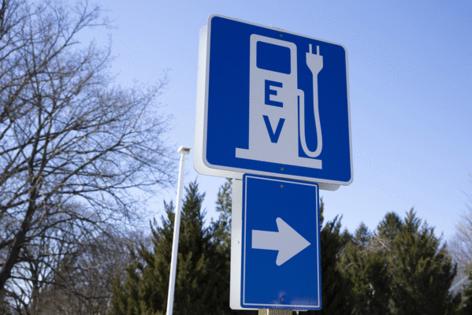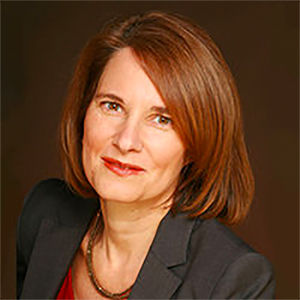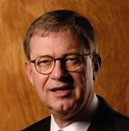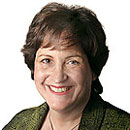Javier Blas: It's electricity realism, not climate denialism
Published in Op Eds
The electrification of everything is the biggest shake up the global energy system has seen in decades. Unfortunately, the route to the future is hung up by the culture wars of the energy transition and the fight against climate change. That’s putting pressure on the advocates of electric vehicles, heat pumps and wind turbines to address the risks their vision carries.
Confronting them is increasingly important as power consumption booms. Since 2010, global electricity demand has grown almost twice as fast as total energy use. The trend is likely to continue, in part because of electron-hungry new technologies, like data centers and artificial intelligence, and in part simply because the world is getting richer.
At the same time, the way the world meets electricity demand is changing beyond recognition: Weather-dependent generation sources like solar panels and wind turbines are becoming the largest source of incremental supply in contrast to the dependable sources the world has relied on for the past century — atomic reactors, coal-fired power plants and large hydropower projects.
Still, the global mindset when it comes to energy security is firmly focused on the geopolitics of fossil fuels and the Middle East, rather than in the new world of electrons. Energy officials have yet to map properly the risk implications of electrifying everything. Fortunately, governments are starting to wake up to them.
The International Energy Agency, which was born out of the 1973 oil shock, is proposing to elevate “electricity security to a strategic policy priority.” In a confidential background paper ahead of a meeting on energy security organized with the UK government in London April 24-25, it told delegates that "electricity security is more important than ever." Hardly anyone in Britain would disagree: Only a few weeks ago, Heathrow Airport shut down after a single transformer at an old substation caught on fire.
Unfortunately, green activists, who hardly see any problem with electrifying everything, believe any concerns represent little more than attempts to delay a needed transition away from fossil fuels. Climate deniers only see trouble in renewables, EVs and the other greener technologies, forgetting all the risks that oil, gas and coal bring along. In between both positions lies the reality.
The first risk of electrifying everything is meeting the huge extra demand for electrons. From 2025 to 2027, global electricity consumption is expected to rise every year by the equivalent of what Japan consumes today. If renewables can’t match that increase, alternative sources will be needed. Sadly, China is still relying on coal-fired stations to meet the growth in electricity demand. That's a huge risk for the environment.
Often forgotten as the growth in renewable generation attracts headlines, coal is still the world's favorite source of electricity, providing just over a third of all the electrons. Add natural gas and the two account for roughly 50% of the world's electricity supply.
The second risk is matching a demand that requires 24/7 supply with a generation system that, at the margin, depends today on whether the sun is shining and the wind is blowing. “Systemic challenges will emerge from balancing increasingly renewable-dominated grids during extended low-generation periods," the IEA said in its confidential paper, which was seen by Bloomberg Opinion.
In plain English: It’s unclear how the grid will work when the weather isn't helping. That's a reality that the IEA — and renewable advocates — have long downplayed. It's refreshing that it is now acknowledged openly.
There's an additional headache. Under pressure to meet green targets, utilities are shutting down so-called dispatchable power plants that can be turned on and off on demand, like atomic reactors and coal- and gas-fired plants. Germany, which shut all its nuclear power stations, is a textbook example. “Current vulnerabilities stem from premature retirement of dispatchable generation without adequate replacements,” the IEA warned.
The third risk is the spiderweb-like grid that connects hundreds of power plants, substations, and consumers. Bottlenecks mean that renewable plants often have to wait months, if not years, to start producing. The not-in-my-backyard attitude means that investments needed to accommodate more renewable production are delayed. If investment in overhead power lines is lacking, spending in the last few miles of connection is even more sorely missing. The world needs many more transformers and low-tension distribution lines to accommodate the growth in demand. Investment in grid storage is also lacking.
The fourth risk is the special nature of electricity. Supply and demand of electrons must match every second, every minute, every hour, every day. The coal, gas, and oil markets have many buffers and stockpiles, smoothing out any glitches. Electricity doesn't have that luxury. That makes the system more vulnerable. A pylon that goes down can trigger a regional blackout; a cyberattack can disconnect large swatches of the network.
The fifth risk is price volatility. Compared to fossil fuels, electricity prices have swung incredibly over the last five years. In Germany, day-ahead wholesale power prices had been since 2020 as high as €687 ($782) per megawatt hour and as low as minus €5 per MWh. The extreme volatility means not only pain for consumers, but also difficult investment decisions by producers. Renewable energy — and the need for costly gas-fired power plants as backup during bad weather periods — are the main reason behind that volatility.
The first step to solve a problem is to acknowledge it. It's good news that governments are openly talking about the risks of well-intended green policies. Now, the job is to start addressing them. Flagging the problem isn't climate denialism. It's electricity realism.
_____
This column reflects the personal views of the author and does not necessarily reflect the opinion of the editorial board or Bloomberg LP and its owners.
Javier Blas is a Bloomberg Opinion columnist covering energy and commodities. He is coauthor of “The World for Sale: Money, Power and the Traders Who Barter the Earth’s Resources.”
_____
©2025 Bloomberg L.P. Visit bloomberg.com/opinion. Distributed by Tribune Content Agency, LLC.




























































Comments